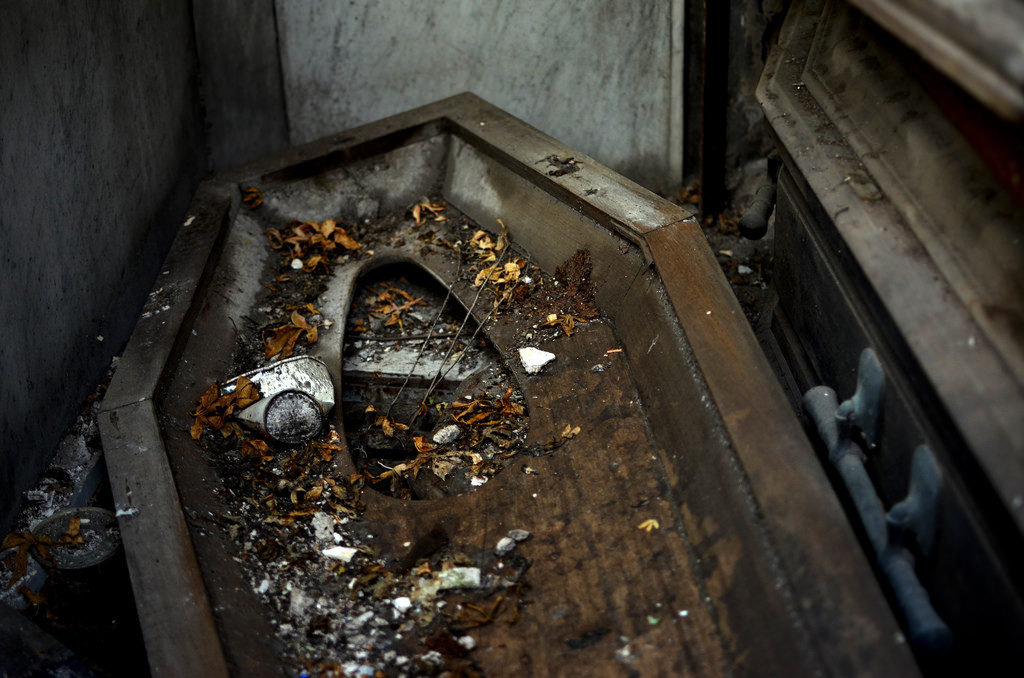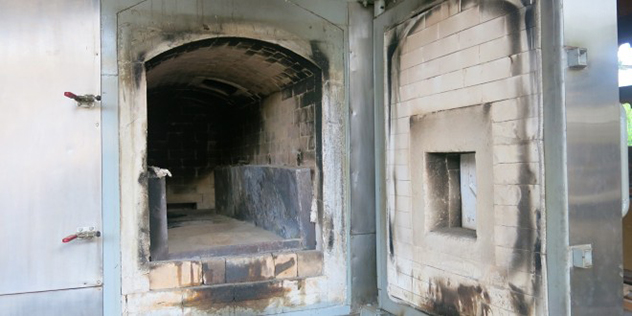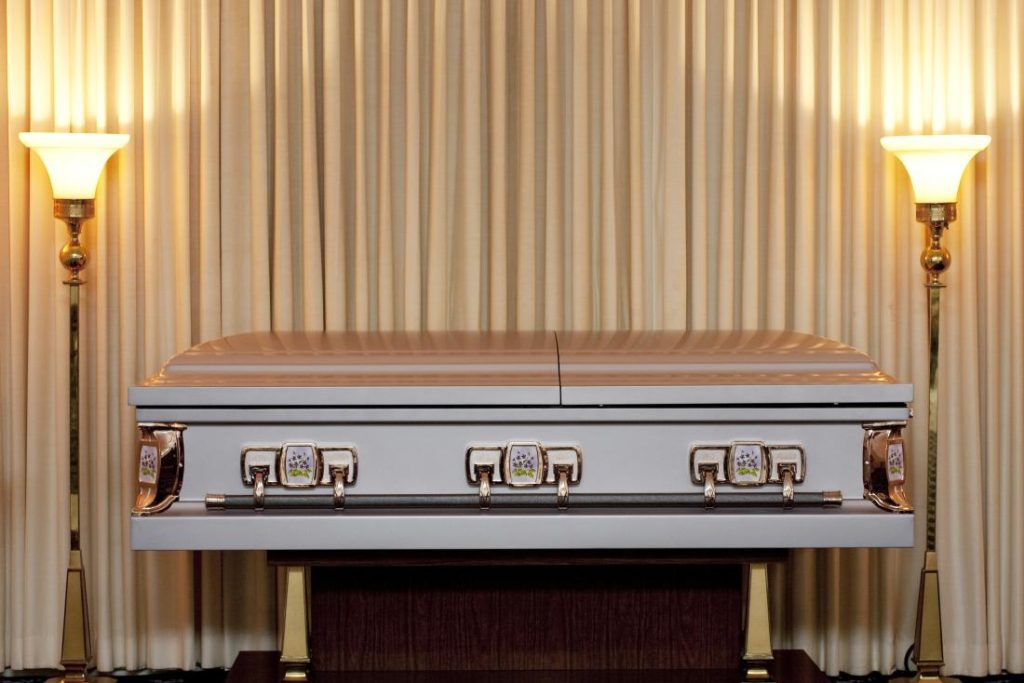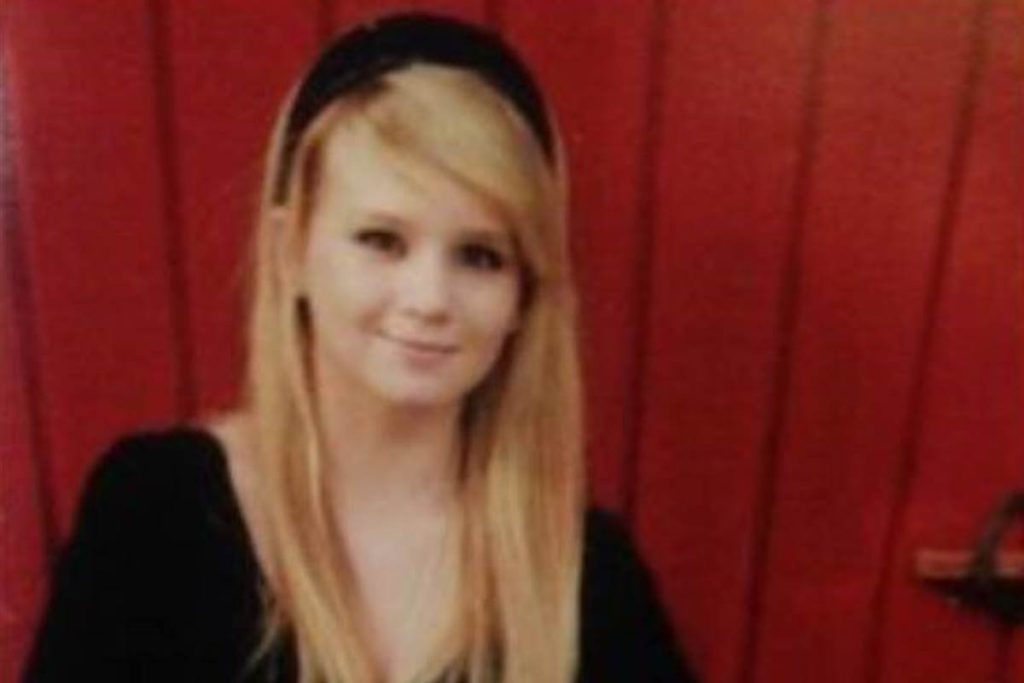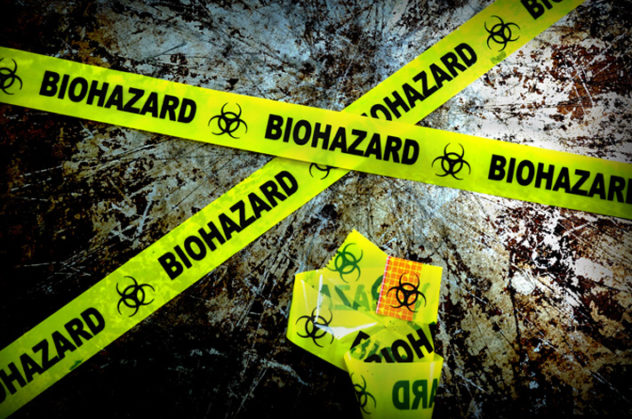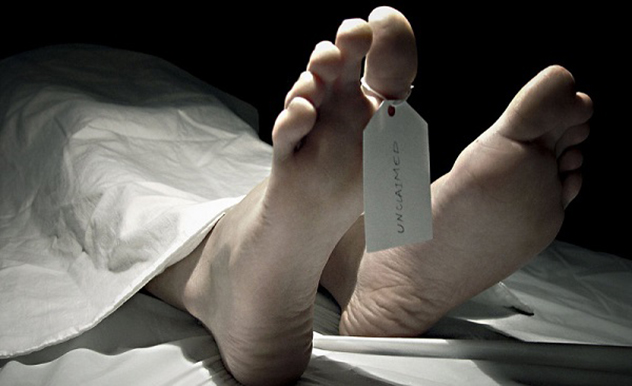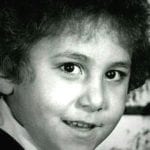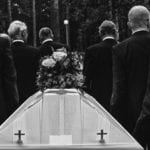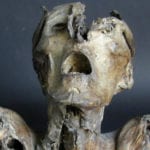Needless to say, we want to warn readers that this list isn’t something you want to read while you’re eating.
10Bobby Wilks
In 1988, Bobby Wilks was 51-years-old and he had been the funeral director at the Barber Funeral Home in Cross Plains, Tennessee, for at least 20 years. At the gravesites, Wilks would often advise the families of the deceased to not watch the lowering of the casket because it might be too difficult. Many families heeded his advice; after all, he was the expert when it came to funerals. In October 1988, Wilks gave a family his usual gravesite spiel, and the pall bearers walked away from the gravesite of their deceased loved one, but kept Wilks in their sight. That’s when they saw Wilks throw some potted flowers into the grave and he didn’t put on the lid of the vault, a $375 add-on that Wilks had sold them. They went to the police and they arrested Wilks. Once Wilks’ arrest made the news, other families filed complaints against him. The only way to check the claims was to exhume bodies that were buried by Wilks and 30 graves in all were dug up. Like the initial case that Wilks was arrested for, some of the graves were buried without vaults, but sadly, that was only the beginning and the least offensive thing he did. At least 10 coffins were stuffed with garbage like bottles, dirty diapers, used cans of dog food, and bags of hair. At least two coffins were buried on their side and one had an arm sticking out of the coffin. That suggests that Wilks didn’t lower the caskets, they were just dumped in. However, those people were lucky to get a casket. One man was buried without one. A gravedigger who helped exhume the bodies said that it was like Wilks was angry at the dead. In October 1989, Wilks pleaded guilty to 48 different charges and was sentenced to 28 years and 11 months in prison.
9The Body Baron of Broward County
In 1977, Joseph Damiano opened a body-transport business in south Florida. He won a number of lucrative contracts and monopolized the market. After a few years, the transport business led to a cremation services business. Then in the 1990s, Damiano was hit with several lawsuits. The first one was in 1994; a woman sued Damiano because she believed her husband’s ashes were mixed with someone else’s. At the trial, former employees testified that at Damiano’s crematory, ashes from different people were often mixed together. Notably, more ash was ordered to be added to cremated babies because their remains don’t leave much in the way of ash. He was sued for that very reason in 1998, when Heather Smith’s five-month-old daughter was cremated by Damiano’s company. At that civil hearing, Damiano didn’t show up to defend himself. In another case, Damiano was accused of losing a woman’s ashes entirely. Other allegations were that instead of scattering ashes, Damiano just had them dumped behind the crematorium or the parking lot. In every civil case, Damiano lost, and he was ordered to pay $39 million to the people he wronged. However, barely any money was collected by the claimants because Damiano didn’t have any property in his name. Instead, he put all his businesses and property in the names of other people. In 2001, there was an investigation of funeral services in Florida, and the fact that Damiano owed so much in lawsuits and an additional $15,000 in fines to the government, he quickly drew their attention. They looked into his business and found out that Damiano didn’t have a license to run an incinerator. They also made another startling discovery—Damiano had been illegally renting out bodies to an embalming school without the survivors’ knowledge. In at least two cases, Jewish people were embalmed, which is prohibited in Judaism. As many as 600 bodies were illegally rented out for $110 each. In March 2001, Damiano’s operations were finally shut down and he was arrested for fraud and operating without a license. However, in May 2016, Damiano popped back up in the news because he is running an online a cremation service out of Colorado called Heritage Cremation Provider and Legacy Funeral Services. Customers say ashes come back mishandled and in some cases, it took months to get the ashes. There are even some people who have accused the company of holding the ashes of loved ones “ransom.”
8Mark Calebs
News stories about people stealing things from funeral homes are sadly not that uncommon. However, none of them are as creepy as Mark Calebs. Shortly after midnight on June 27, 1998, the staff of a funeral home in London, Kentucky, was alerted that there had been a break in. They looked around and nothing seemed to be missing. That is until they looked in the casket of nine-year-old Brittany Rae Bradley. Brittany Rae had passed away after a two-year battle with a rare cancer, and earlier in the evening, the funeral home had hosted a visitation for her. And as for what was missing, well, that was her underwear. When the discovery was made, the family of Brittany Rae accused her cousin, 31-year-old Mark Calebs, of stealing the undergarment. The police looked in the camper where he lived and found the missing underwear. The good news, if there can be good news in a story like this, is that there were no signs of sexual abuse on Brittany Rae’s body. Calebs was charged with third degree burglary, abuse of a corpse, theft, and criminal mischief.
7Mark Villella
On August 1, 1999, funeral director Mark Villella found something that no husband ever wants to find; a letter written by his wife that was addressed to her lover. Over the next several days, Mark and his wife of two years, 28-year-old Exelee, talked things over, and at times, things got heated. On the night of August 5, Exelee called her sister and said that she and Mark were having a fight. Her sister became concerned when Exelee didn’t call back. Exelee’s co-workers also realized something was wrong when she didn’t show up for work and Mark didn’t call looking for her; as he was prone to do nearly every day in a jealous fit. Three days after Exelee called her sister, the police interviewed Mark, and he admitted that they had a fight. He told the police she had left him and he had no idea where she was. However, Exelee’s family had a problem with that because it didn’t seem likely that Exelee would leave her 18-month-old son behind, and her car was still in the driveway. The police looked into Exelee’s disappearance and came to a rather ghastly conclusion. On the same day that police interviewed him, Mark hosted a closed casket funeral for 89-year-old Marjorie Hutchison. The police had reason to believe that Mark put Exelee’s body in the same casket as Hutchinson and buried them together. Three weeks after Exelee went missing, they confronted Mark and they told him they were going to exhume Hutchinson’s casket, so he confessed to stabbing Exelee in the throes of passion. However, the police contend that he stabbed her as she slept. Mark didn’t want to go through a costly divorce and he didn’t want to share custody of their son. He pleaded guilty and he was sentenced to 30 years in prison.
6Anthony Parisi
In July 1986, Anthony Parisi passed away at the age of 83. Parisi, who was a co-founder of a grocery store in Mount Vernon, New York, died of natural causes and his body was being held at the Yannantuono Funeral Home, also in Mount Vernon. On the morning of July 26, the employees of the funeral home went to prepare Parisi for his burial and when they looked into his casket, they discovered that his head was missing. The police were called and they speculated that sometime in the middle of the night, someone broke into the funeral home and they used a razor or a scalpel to remove the head. Once the head was cut off, the intruder took it with him or her. Nothing else in the funeral home was stolen or perturbed. There weren’t even signs of a break in. The police are baffled by the case. They have no idea who stole the head, why it was stolen, and they don’t know what happened to it because it was never found.
5Julie Mott
On August 15, 2015, friends and family of Julie Mott attended her visitation at a funeral home in San Antonio, Texas. Had she been alive, it would have been her 26th birthday, but Mott had lost her battle with cystic fibrosis the week before. She had been diagnosed with the life shortening disease when she was 2-years-old. While the funeral should have been part of the grieving process for Mott’s friends and family, the funeral was the start of a new nightmare. Sometime after the visitation, but before the funeral home closed for the day, someone took Mott’s body out of her casket and then they took her body with them. Sadly, the body has never been found. The police are unsure who stole the body of the pretty, young woman and they are exploring multiple theories. One theory is that an ex-boyfriend who was supposedly obsessed with her took the body. He was one of the last people seen exiting the chapel. However, police used cadaver dogs to search the man’s car, home, and some property owned by his grandparents, and nothing was found. He’s also never been publicly identified by the police, let alone charged with any crimes. Another theory that comes from the owner of the funeral home, Robert “Dick” Tips (yes, that’s his name). He believes that the body may have been stolen by someone who was morally objected to cremation. Another theory is that the funeral home may have been involved in the disappearance. In January 2016, Mott’s family sued the funeral home for gross negligence. The ex-boyfriend also blames the funeral home. He says that they lost Mott’s body or had her prematurely cremated. In the funeral homes’ defense, Tips pointed out that he helped organize searches in the first weeks that Mott’s body went missing and he has offered a $20,000 reward for information on the whereabouts of her body.
4Robert Winston
Most people get into the funeral business because it’s a family business. Robert Winston, on the other hand, got into the business when he was 49-years-old after he retired from being an electrician. While on the job, he developed asbestosis and after he settled with the asbestos company, he went to school to train to be a funeral director. Winston passed his exams in 1991 and in 1993, he opened the Newman-Winston Memorial Chapel in McKeesport, Pennsylvania, with his settlement money. The problem was that Winston wasn’t a great businessman. He was never really good at collecting the hundreds of thousands of dollars owed to him and by late 2000, he was in deep financial problems. One steady source of income for Winston came from the Magee-Women’s Hospital and Winston’s job was to cremate fetuses and dead newborns. The problem was that he would take the money from them and put it towards other bills. However, since he did this, he couldn’t afford to cremate the fetuses and the bodies of the infants, so he just stored them in the funeral home. Then in March 2004, Winston had his license suspended for three years. No, it wasn’t for storing dead babies and fetuses; he was suspended for running an unlicensed funeral home and he didn’t notify the state that he was selling prearranged funeral plans. Since Winston didn’t have a license, he had no income, and he lost the funeral home. When he was evicted, he moved the bodies and the fetuses to the garage at his home. In August 2005, his ex-wife called the police and she told them that he may be storing bodies in his garage. The police searched the garage and inside they found 179 fetuses that were over 16 weeks of gestation, 154 fetuses that were under 16 weeks of gestation, 253 biohazard containers containing unspecified fetal autopsy remains, and the remains of 19 newborns that were born alive but died shortly after birth. Police believed that all the remains came from the hospital between 2000 and 2002. Winston was arrested and charged with 19 counts of abusing a corpse and theft. He pleaded guilty and was given probation.
3The Biomedical Tissue Services
Michael Mastromarino was a dental surgeon, but he lost his license in 2002 because he was caught using intravenous drugs while he worked on patients. His next business venture was his own company called Biomedical Tissue Services which was based in Fort Lee, New Jersey, and it was a company that took bones and tissue from corpses to be used for implants. While it may sound grotesque, taking bones and tissue from dead bodies isn’t uncommon. Many people know that doctors can take organs from people who are already still alive and then transplant the organs into someone else. Well, bones and some tissue don’t have the same problem with immediacy so they can be harvested a few hours after death at funeral homes. However, in order for a company to harvest a body, four basic conditions must be met. First, they have to have permission from the deceased and/or the family; second, the person couldn’t have had any communicable diseases; third, the person couldn’t be too old; and finally, the person can’t be dead longer than 15-hours. Just four common sense rules and Mastromarino’s company ignored all of them. Mastromarino used a network of undertakers and he would pay them a standard fee of about $1,000 per body. He would then send a team of three people and they would harvest the body. None of the families were aware that any of this was happening. One notable body that was carved up was the former host of PBS’s Masterpiece Theater, Alistair Cooke. When Cooke died, he was 94 and had cancer, yet arm and leg bones were taken from his body. On each body, Mastromarino apparently made $10,000 to $15,000, and he illegally harvested bone and tissue from at least 1,076 bodies. If you do the math, it’s clear that the grotesque scam made Mastromarino a multi-millionaire. The problem was that people were getting sick because of the transplants. Just a few horrifying examples include a 23-year-old man who had surgery to repair a torn ACL. He was given cadaver cartilage that was harvested 19-hours after death. During that extra time in the dead body, a deadly fungus formed on the cartilage and when it was transplanted, it infected the man’s knee. A 74-year-old woman got a bone implant in her lower back and she contracted syphilis from it. A 41-year-old man tested positive for HIV and hepatitis C after getting a bone implant for a degenerative disk disease. And again, those are only a few of the cases. The true toll of the scam will probably never be known because Mastromarino flooded the market with possibly tainted bone and tissue and it had been implanted in over 10,000 people. Things started to fall apart for Mastromarino in November 2004, when the New York Police Department was called into a funeral home that was formerly owned by one of Mastromarino’s funeral directors. After a lengthy investigation, they arrested Mastromarino, three of his employees, and three funeral directors in connection with the body harvesting ring. Mastromarino was sentenced to 18 to 54 years in prison and his wife agreed to pay $4.6 million to the families touched by Mastromarino’s bone and tissue network. Mastromarino died from metastatic liver cancer in July 2013 at the age of 49.
2Walter and Helen Pestinikas
In March 1982, Joseph Kly, a 90-year-old retired coal miner with black lung, went to a hospital in Scranton, Pennsylvania, because he was having problems swallowing. While he was in the hospital, he made funeral arrangements with Walter and Helen Pestinikas who owned a local funeral home. After his four week stay in the hospital, instead of returning home to live with his stepson, Kly went to live with the Pestinikases. The Pestinikases, who were both in their 60s, put Kly up in a converted patio area of a defunct bar that they owned in rural Scranton. Two and a half years later on November 15, 1984, Kly was found dead in the bar. The authorities were called and Kly’s body was taken to the medical examiner. The authorities also noted that the area where Kly had lived for two and a half years was “unfit for human habitation.” Notably, there was no refrigeration, no sink, and no insulation. Also, human waste was scattered about the small room. Kly’s body was taken to the medical examiner and the ME concluded that Kly had starved to death and had suffered severe dehydration. He also hadn’t eaten in the days leading up to his death. However, this was pretty obvious because, at the time of his death, Kly weighed only 62 pounds. Amazingly, since Kly had paid for his funeral arraignments with the Pestinikases, the medical examiner gave his body back to the couple, and they buried him. The police said the family had the final decision when it came to who would bury the body. Kly didn’t have many relatives, and the few he did have couldn’t afford a funeral for him elsewhere, so they decided to send his withered body to the funeral home that was owned by the people who slowly starved him to death. Six days after Kly was reported dead, the police went back to the room where he had lived out the last two and a half years of his life and found that the Pestinikases had cleaned it and painted the room. There was also a walker in the room that wasn’t there before. The Pestinikases were arrested and they were accused of holding Kly captive as they stole his money and starved him to death. When Kly moved in, he gave Helen Pestinikas access to his bank account, which had about $35,000 in it, but when he died, there was only $55 remaining in the account. The Pestinikases’ defense was that Kly was old, an anorexic, he suffered from black lung, and he had several other medical conditions that could have contributed to his death. They said they did the best they could for him and he died of natural causes. They also claimed the autopsy was botched. To refute their claim, Kly’s body was exhumed in February 1985 and another autopsy was performed. Immediately, the medical examiner knew something was wrong. On the stomach, there were two types of stitching. When he looked inside the body, he found that the stomach and other organs had been replaced with ones from someone who had eaten before their death. The Pestinikases denied swapping organs, so where the healthier organs came from is a mystery. The Pestinikases were found guilty in February 1987 of third degree murder and other charges. Both of them were given five-to-10 years in jail.
1The Tri-State Crematory Scandal
In 1996, due to his father getting ill, Tommy Ray Brent Marsh left college to run his family’s business, which was a crematorium that his father had built in the backyard of the family home in Noble, Georgia. While Marsh was running the Tri-State Crematory, thousands of bodies were sent to him to be cremated. In October 2000, the sheriff’s department got their first report that something unusual may be happening at the crematorium. A gasman notified them to say that he saw bodies lying around the Marsh property, but the sheriff’s department never followed up on the tip. 13 months later, the Environmental Protection Agency was given an anonymous tip that there were bodies in the woods surrounding the Marsh’s property. They supposedly did an investigation, but nothing was found. On February 14, 2002, the police received a call from an anonymous source saying that while walking their dog in the woods, they found a human arm bone. The next day, the police finally went to the crematory and on their first day, they found 49 bodies that should have been cremated, but weren’t. They widened their search and found 334 bodies scattered on and around the Marsh property. Some of them were up to five years old. If the sheer number of bodies found wasn’t disturbing enough, how the bodies were “stored” was appalling. Some of the bodies were still in their caskets and in some cases, the caskets were stacked on top of each other. However, many other bodies weren’t in caskets at all and were just strewn about. Some of them were still dressed in hospital gowns, complete with wrist bands. Bodies were found throughout the woods, hidden in nearly every building on the property, and some were dumped into holes in the ground. Of course, since some bodies had been there five years, there were almost all levels of decomposition. For example, in the garage, police found coffins with bodies in them stacked on top of each other and even more bodies just lying around with their fluids leaking out onto the ground. Needless to say, while Marsh had considerable fewer corpses than Rob Zombie, Marsh’s home was definitely a lot more terrifying. As for why he did it, Marsh’s lawyer said Marsh had mercury poisoning from the cremation process and it was like he was living in a fog. The police think he just got too far behind in his work and/or that he never really wanted to be part of the family business. Marsh was hit with 787 felony charges. This included 179 counts of abusing a corpse and 439 counts of theft. Marsh pleaded guilty and he was sentenced to 12-years in prison in February 2004. It also cost the county and the state $10 million for cleanup and recovery of the bodies. In total, 133 bodies couldn’t be identified. Robert Grimminck is a Canadian freelance writer. You can friend him on Facebook, follow him on Twitter or on Pinterest, or visit his website.
